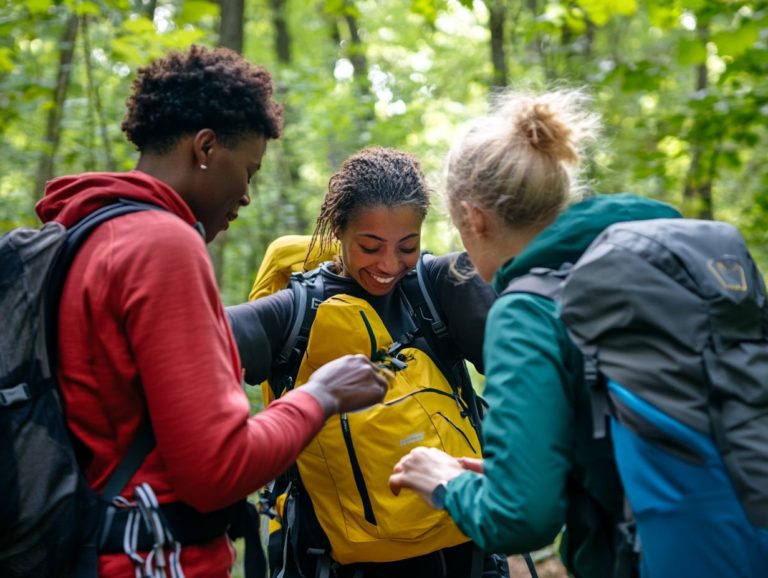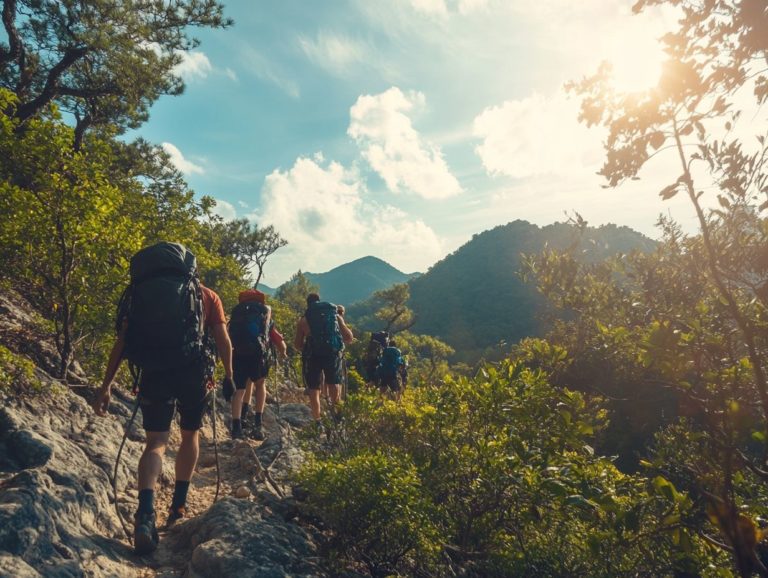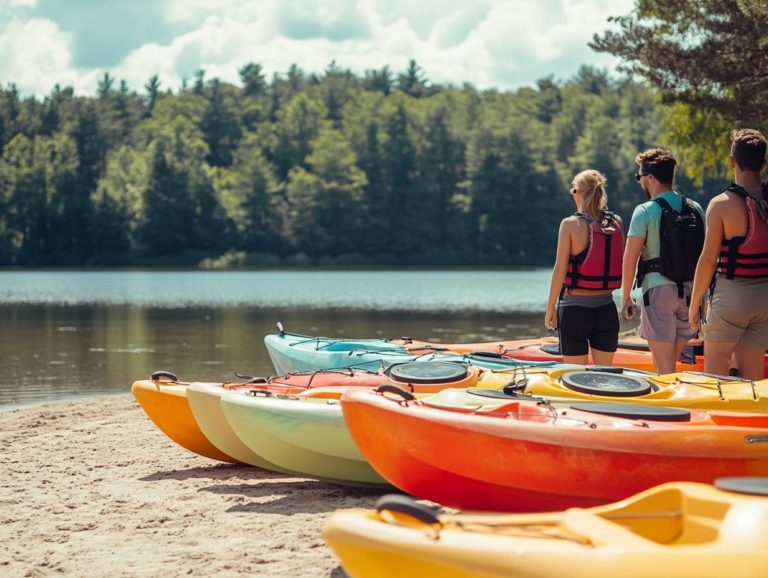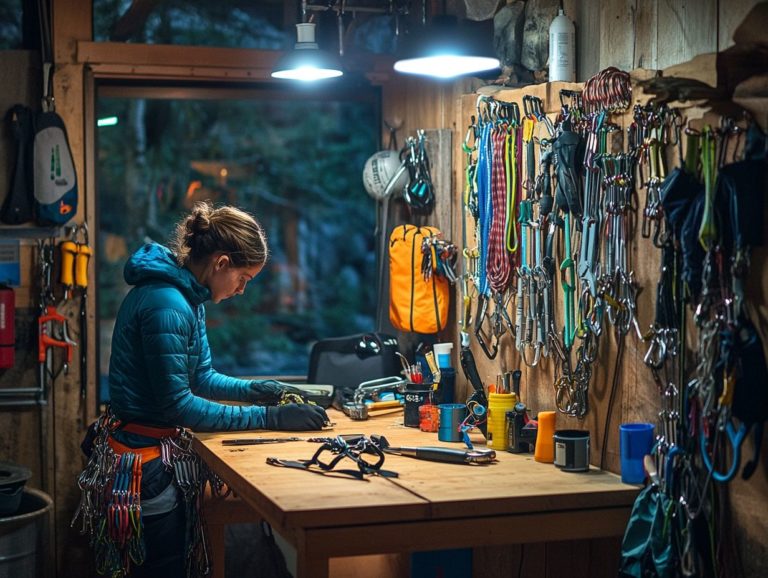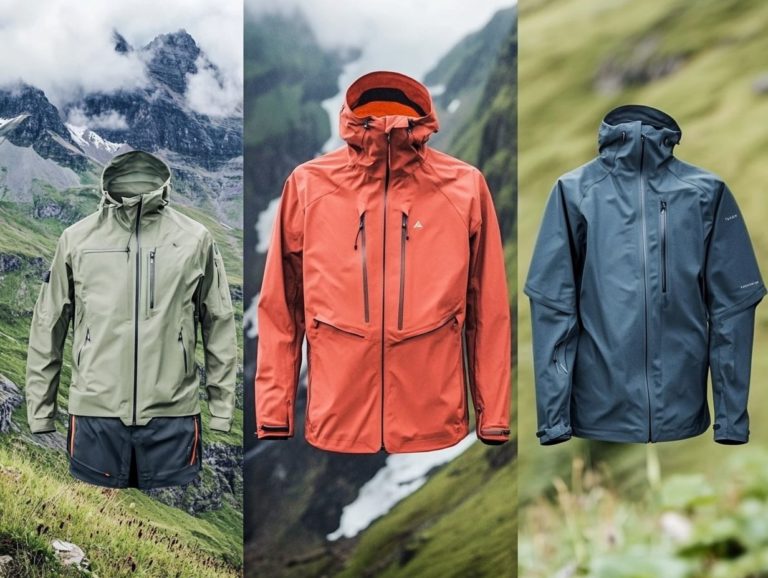How to Prepare for a Multi-Day Hiking Trip?
Planning a multi-day hiking trip can evoke excitement and some nervousness. Every detail matters, from assessing your readiness to selecting the right gear.
Consider your food and hydration needs, map your route, and establish safety measures for peace of mind. Preparing for both physical and mental challenges enhances your experience.
Are you eager to hit the trails? Let s dive into how you can get ready for an unforgettable adventure!
Contents
- Key Takeaways:
- Preparation for a Multi-Day Hiking Trip
- Essential Gear for a Multi-Day Hike
- Food and Water Planning
- Navigation and Safety Measures
- Physical and Mental Challenges of a Multi-Day Hike
- Enjoying the Journey: Tips for a Successful Hike
- Frequently Asked Questions
- What are the essential items I need to pack for a multi-day hiking trip?
- How physically fit do I need to be to take on a multi-day hiking trip?
- What should I do to prevent blisters while hiking?
- How can I make sure I have enough water for a multi-day hiking trip?
- What safety precautions should I take before and during a multi-day hiking trip?
- What do I need to consider when choosing a hiking route for a multi-day trip?
Key Takeaways:

Preparation for a Multi-Day Hiking Trip
Preparing for a multi-day hike means understanding key elements for your fitness and mental readiness. Choose your destination wisely, whether it’s the stunning Grand Teton National Park or a local gem.
Every detail you attend to is crucial. This preparation lays the foundation for an unforgettable adventure.
Assessing Physical and Mental Readiness
Evaluating your readiness is essential for success. It impacts how well you face the journey’s demands.
Develop a fitness regimen that includes exercises for heart and lung fitness and strength. This training boosts both your stamina and mental fortitude.
Incorporate interval training, like hill sprints, to improve endurance. Strength exercises for your legs and core help you navigate rugged terrain.
Mental preparation techniques, including visualization and mindfulness, can enhance your resilience. These methods help you manage fatigue and maintain focus during challenges.
Essential Gear for a Multi-Day Hike
Having the right gear is crucial for safety and comfort on the trail. You need to be prepared for unexpected weather and wildlife encounters.
Packing Checklist and Tips
Create a packing checklist to ensure you have everything you need. This list helps you track vital items like:
- Water filters
- Hydration packs
- Nutrient-dense snacks
Plan meals that provide balanced energy. Good examples include:
- Protein bars
- Dried fruits
- Easy-to-cook meals
Test your gear, from filters to stoves, to avoid surprises. Proper nutrition and meal planning are critical for sustaining energy and enhancing your experience.
Food and Water Planning

Effective food and water planning is essential for maintaining energy during your hike. Carefully consider your hydration needs and the nutritional quality of your meals.
Meal Ideas and Hydration Strategies
When planning meals and hydration strategies for a multi-day hike, prioritize lightweight and nutritious options to elevate your exploration experience.
Backpackers often choose meals like instant oatmeal, freeze-dried vegetables, and quinoa bowls. These options are compact and energy-dense. Additionally, including protein-rich foods such as jerky and nut butter packets will help maintain your stamina throughout the journey.
To meet your hydration needs, use water purification methods like filters or UV light systems for safe drinking water from rivers or lakes. Stay sharp! It’s vital to drink water regularly ideally every 30 minutes even if you don’t feel thirsty, to prevent dehydration during those demanding climbs.
Don’t forget to pack electrolyte tablets; they help replenish lost minerals and further enhance your hydration strategy.
Effective navigation and safety measures are the cornerstones of a successful multi-day hiking trip. Thorough trail planning is essential, as well as being ready for any potential emergencies that may arise.
Route Planning and Emergency Protocols
Route planning is crucial for a multi-day hike, not just for navigation but for ensuring your safety and respecting the environment during your journey.
Carefully selecting your path enhances your overall experience. Consider factors like terrain difficulty, distance, and availability of campsites to make informed decisions. Stay alert! Potential hazards like sudden weather changes and wildlife encounters can impact your safety significantly.
Having a solid emergency protocol is crucial. Know your nearest exit routes, carry a first aid kit, and establish communication plans for unexpected situations.
Respecting the environment is also important. Following “Leave No Trace” principles means taking steps to minimize your impact on nature, preserving its beauty for future adventurers.
Physical and Mental Challenges of a Multi-Day Hike
The physical and mental challenges you face on a multi-day hike can be demanding, yet also rewarding. Get ready to dive deep into the challenges that await you! Understanding the physical rigors and developing mental endurance are key to achieving success.
Embracing these challenges tests your limits and cultivates resilience, allowing you to savor the journey and its breathtaking rewards.
How to Train and Prepare for the Demands

Training for a multi-day hike requires a comprehensive fitness program to enhance your heart and lung fitness and overall physical prowess.
To effectively navigate diverse terrains and altitudes on the trail, integrate various training methods into your regimen. For example, stair climbing boosts your cardiovascular endurance and strengthens the leg muscles needed for challenging uphill segments.
Engaging in specific endurance exercises, such as interval training and long-distance running, will elevate your stamina and prepare you for prolonged physical exertion. By weaving these approaches into your training routine, you cultivate the resilience needed to tackle the physical challenges of hiking. Additionally, knowing what to wear for a multi-day hiking trip ensures your muscle memory is primed and your peak performance is ready when it counts.
Enjoying the Journey: Tips for a Successful Hike
Embracing a positive mindset is crucial for savoring the journey on a multi-day hike. It shapes not only your experience but also the dynamics of your hiking team.
Approaching each step with optimism elevates the entire group’s morale, fostering camaraderie and resilience in the face of challenges.
Mindset and Strategies for a Positive Experience
Cultivating a positive mindset and employing effective strategies is essential for ensuring a rewarding experience during your multi-day hike, especially when you’re part of a group.
To achieve this, it s beneficial to adopt mindfulness techniques, such as focusing on the present moment and genuinely appreciating the beauty of nature that surrounds you.
When faced with challenges like steep inclines or unpredictable weather, try to embrace these hurdles as opportunities for growth. This perspective can significantly boost morale.
The dynamics of your group are very important. Shared laughter and encouragement can elevate spirits during tough moments. Working together to find solutions promotes a sense of unity.
By maintaining open communication and supporting one another, you can foster an atmosphere where positivity flourishes, transforming potential obstacles into unforgettable experiences.
Frequently Asked Questions
What are the essential items I need to pack for a multi-day hiking trip?
Aside from the basic hiking gear such as a backpack, sturdy boots, and a map, make sure to pack enough food and water.
Don’t forget to include a first aid kit and emergency supplies. A complete packing list should also feature a tent suitable for all four seasons for changing weather conditions and backpacking meals that are easy to prepare. Additionally, consider checking out what to pack for a day hike to ensure you have everything you need for your outdoor adventure.
How physically fit do I need to be to take on a multi-day hiking trip?
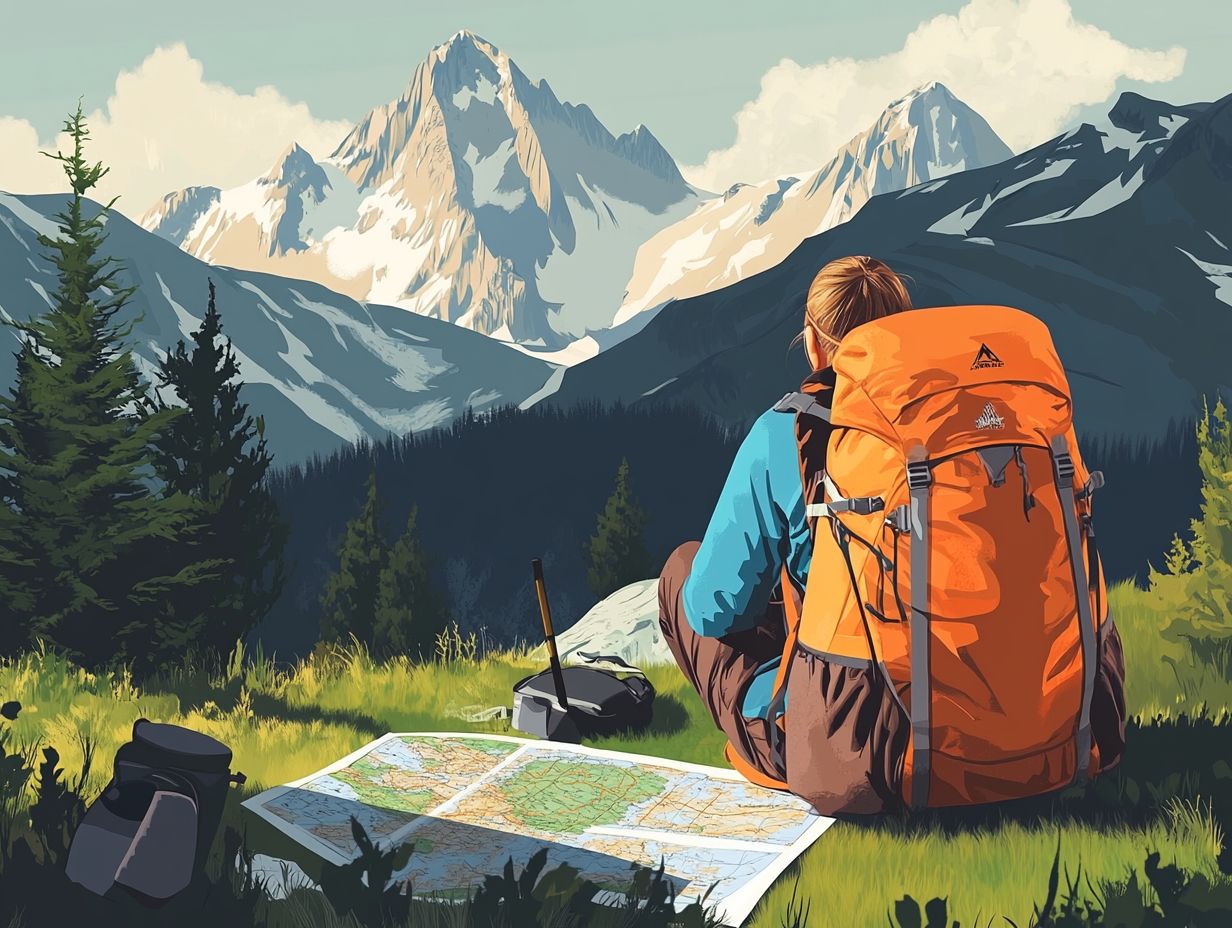
Multi-day hiking trips can be physically demanding, so you need to be in good physical shape.
Train by gradually increasing your hiking distance and carrying a weighted pack. Also, consult with a doctor before embarking on a hiking trip if you have any underlying health conditions.
What should I do to prevent blisters while hiking?
To prevent blisters, wear properly fitting hiking boots and socks.
Apply a generous amount of petroleum jelly or anti-chafe balm on areas prone to blisters. Additionally, take breaks to air out your feet and change your socks if they become damp.
How can I make sure I have enough water for a multi-day hiking trip?
Make sure you bring plenty of water to stay refreshed and energized on your adventure, but it can also be heavy to carry.
Consider bringing a water filtration system or water purification tablets to refill your water supply along the way. Research and plan out any natural water sources, such as streams or lakes, that you can access during the hike.
Be aware of weather trends that may affect water availability.
Prepare wisely and embark on your hiking journey with confidence!
What safety precautions should I take before and during a multi-day hiking trip?
Before your trip, tell someone your itinerary and expected return. It’s crucial for safety.
Stay on marked trails and watch for hazards like wildlife and changing weather. Following Leave No Trace principles will help keep the environment pristine.
Ensure you have the right gear and safety plans in place for a worry-free adventure!
What do I need to consider when choosing a hiking route for a multi-day trip?
When selecting a hiking route, think about your fitness level and the trail’s difficulty. Be aware of potential hazards along the way.
Research the terrain and elevation changes. Also, check if any permits or camping reservations are needed, including backpacking permits.
Always have a backup plan for unexpected closures or changes on your route!

